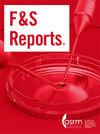Outcomes of ovulation induction in obese women with infertility after bariatric surgery
IF 2.2
引用次数: 0
Abstract
Objective
To compare pregnancy rate (PR) and clinical pregnancy rates between obese women with a history of bariatric surgery and nonoperated controls undergoing ovulation induction (OI).
Design
Retrospective case-control study.
Subjects
Twenty-seven women with surgical weight loss in the case group (group 1), 2 nonoperated age-matched control groups consisting of 27 women with body mass index (BMI) similar to the preoperative BMI of case group (group 2), and 28 women matched by postoperative BMI of the case group (group 3).
Exposure
Bariatric surgery before OIs.
Main Outcome Measures
Cumulative PR and clinical pregnancy rates (CPRs).
Results
Group 1 cases and the 2 nonoperated obese control groups had pretreatment BMIs of 34.67, 41.51, and 35.83 kg/m2, respectively. Each underwent 64 (group 1), 80 (group 2), and 68 (group 3) OI cycles. No significant differences were found in the mean follicular phase lengths (11.13, 13.39, and 12.14 days) and peak estradiol levels (166.17, 278.36, and 246.43 pg/mL). The outcomes of cumulative pregnancy rate were 12.50%, 10.00%, and 20.59% across the 3 groups. The cumulative CPR showed a trend toward improvement in group 3 (9.38%, 6.25%, and 19.12%).
Conclusion
Among women with infertility undergoing OIs, surgical weight loss may improve CPR despite a persistent obese postoperative BMI.
肥胖不孕妇女减肥手术后诱导排卵的结果
目的比较有减肥手术史的肥胖妇女与未行诱导排卵术的对照组的妊娠率(PR)和临床妊娠率。设计回顾性病例对照研究。病例组手术减重的女性27例(第一组),非手术年龄匹配的对照组27例,体重指数(BMI)与病例组术前相似(第二组),与病例组术后BMI匹配的28例(第三组)。暴露:OIs前的整形手术。主要观察指标:累积PR和临床妊娠率(cpr)。结果1组和2个非手术肥胖对照组的预处理bmi分别为34.67、41.51和35.83 kg/m2。每位患者分别经历了64个(第1组)、80个(第2组)和68个(第3组)成骨不全周期。平均卵泡期长(11.13、13.39和12.14天)和雌二醇峰值水平(166.17、278.36和246.43 pg/mL)无显著差异。3组累计妊娠率分别为12.50%、10.00%和20.59%。3组累计CPR有改善趋势(9.38%、6.25%、19.12%)。结论:在接受OIs手术的不孕女性中,尽管术后BMI持续肥胖,但手术减肥可能改善心肺复苏术。
本文章由计算机程序翻译,如有差异,请以英文原文为准。
求助全文
约1分钟内获得全文
求助全文

 求助内容:
求助内容: 应助结果提醒方式:
应助结果提醒方式:


